Minor planet category Main belt Orbital period 1,705 days Orbits Sun Discoverer Johann Palisa | Discovery date April 10, 1880 Alternative names A905 OA, A910 RA Aphelion 3.496 AU (523.049 Gm) Discovered 10 April 1880 Moons Cleoselene, Alexhelios | |
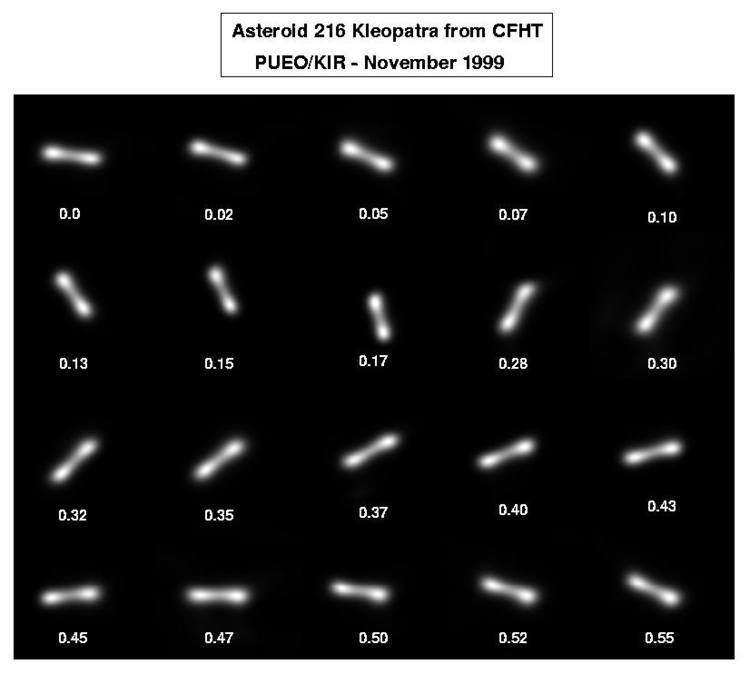 | ||
Similar Johann Palisa discoveries, Other celestial objects | ||
Occultations by 216 kleopatra the dog bone asteroid
216 Kleopatra (/ˌkliːəˈpætrə, -ˈpɑː-, -ˈpeɪ-/) is an asteroid orbiting in the asteroid belt. It was discovered by Austrian astronomer Johann Palisa on April 10, 1880, from Pula. It is named after Cleopatra, the famous queen of Ancient Egypt. The asteroid is notable for its peculiar shape that resembles that of a ham-bone. In 2008, it was discovered to be a ternary asteroid, having two small moons.
Contents
- Occultations by 216 kleopatra the dog bone asteroid
- 216 kleopatra 12242009 avi
- Physical characteristics
- Moons
- Origin
- References
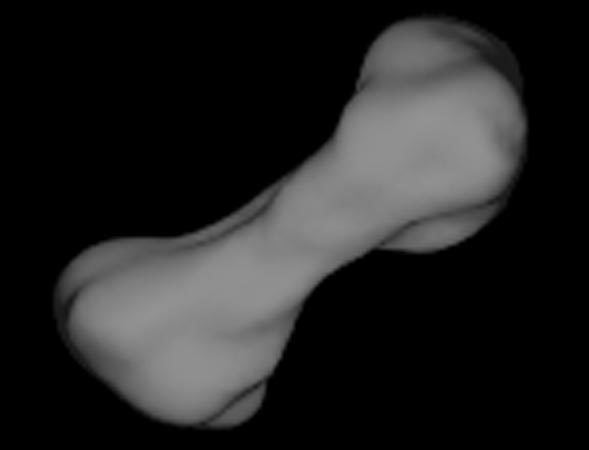
216 kleopatra 12242009 avi
Physical characteristics
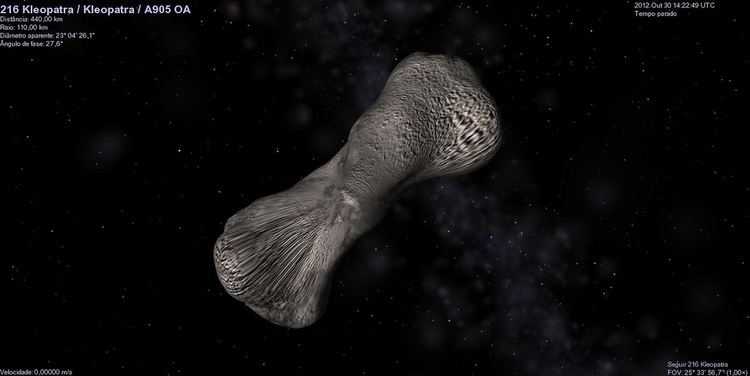
Kleopatra is a relatively large asteroid, measuring 217 × 94 × 81 km. Calculations from its radar albedo and the orbits of its moons show it to be a rubble pile, a loose amalgam of metal, rock, and 30–50% empty space by volume, likely due to a disruptive impact prior to the impact that created its moons.
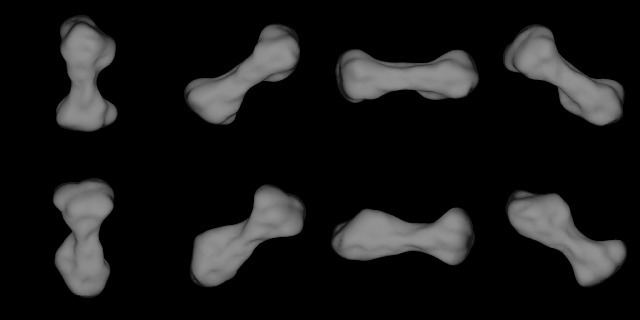
Kleopatra has an unusual shape. Initial observations with the ESO 3.6 m Telescope at La Silla, run by the European Southern Observatory, were interpreted to show a double source with two distinct lobes of similar size. These results were disputed when radar observations at the Arecibo Observatory showed that the two lobes of the asteroid are connected, resembling the shape of a ham-bone. The radar observations provided a detailed shape model that appeared on the cover of Science Magazine.
Moons
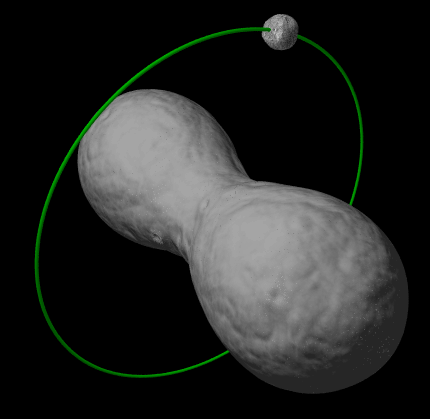
In 1988 a search for satellites or dust orbiting this asteroid was performed using the UH88 telescope at the Mauna Kea Observatories, but the effort came up empty. In September 2008, Franck Marchis and his collaborators announced that by using the Keck Observatory's adaptive optics system, they had discovered two moons orbiting Kleopatra. The outer and inner satellites are about 5 km and 3 km in diameter, respectively.
In February 2011 the moons were named Alexhelios (/ˌælᵻksˈhiːlioʊs/, outer) and Cleoselene (/ˌkliːoʊsᵻˈliːniː/, inner), after Cleopatra's children Alexander Helios and Cleopatra Selene II.
Origin
It is believed that Kleopatra's shape, rotation, and moons are due to an oblique impact perhaps 100 million years ago. The increased rotation would have elongated the asteroid and caused Alexhelios to split off. Cleoselene may have split off later, around 10 million years ago. Kleopatra is a contact binary - if it were spinning much faster, the two lobes would separate from each other, making a true binary system.
